What are the key points of PVC production process in heat shrinkable film?
2022-06-13 13:42PVC heat shrinkable film can assemble individual products into a whole, and is also suitable for packaging individual products. Heat shrinkable film is a kind of thermoplastic film which is stretched and oriented in the production process, but shrinks when heated in the use process. Therefore, no matter which printing method is adopted for printing, before designing the surface pattern, it is necessary to consider the horizontal and vertical shrinkage rate of the material and the allowable deformation error in all directions of the decorative graphic after shrinkage, so as to determine the accurate restoration of the contracted pattern, characters and bar codes on the container. Food industry is a big market for heat shrinkable packaging. At present, the customers of shrink film label market are mainly some large fast-moving consumer goods companies, such as Procter & Gamble, Unilever, shanghai jahwa, etc., whose products are in large quantities and need long-form printing. The initial investment of gravure printing is high, but the gravure printing plate has high printing resistance and low relative cost, which makes it the main choice for shrink film printing. Moreover, the graphic part on the printing plate is concave, so you can get a solid ink layer, bright colors and rich levels.
Sharing the key points of PVC production process in heat shrinkable film:
1. PVC heat shrinkable film products are different in softness and hardness. Generally, PVC products with the dosage of plasticizer below 10PHR in the formula are called hard products;
2. PVC products with plasticizer dosage of 10 ~ 40 phr are called semi-hard products; PVC products whose plasticizer content exceeds 40PHR are called soft products;
3. PVC is a heat-sensitive plastic, so there is no heat stabilizer in the formula. In general PVC formula, the amount of heat stabilizer is 5 ~ 8 phr. If there is less heat stabilizer, it is not enough to prevent PVC from differentiating at the temperature of hot melt molding;
4. if there are more heat stabilizers, the temperature of hot melting activity will be increased;
5. In order to improve the melt processability of PVC and melt processability of PVC formula, processing AIDS should be added to PVC formula. Practice has proved that hard PVC products can't be melt-molded without processing aids, while soft PVC products can't be molded without or in short of processing aids.
Heat shrinkable film can be seen everywhere in life. Small ones have batteries, fruits, food packaging, large ones have trays, and more than 10 meters of equipment and packaging all need it. Because heat shrinkable film is easy to use, economical and practical, it has become a ubiquitous packaging material in our lives. In the non-food field, the application of heat shrinkable film label is also increasing, such as label and bottle cap, sealing, cosmetics, daily chemical products, cultural and sports supplies, kitchen supplies, daily groceries, etc. At the same time, it has been widely used in ceramic products, tea sets, mechanical parts, building materials and transportation materials.
PVC can be seen everywhere in life:
1. Nowadays, there are more and more special shapes and individual designs of beverage containers, and heat shrinkable film labels can clearly show the outline of the outer surface of beverage containers. Heat shrinkable film is close to commodities, with compact packaging, and can be applied to the packaging of irregular commodities; As a label of heat shrinkable film, it saves forest resources, reduces costs, is sanitary and easy to use.
2. PVC heat shrinkable film has good performance and high strength, and can bear the weight of contents. Printing belongs to film printing (the picture and text are inside the film sleeve), which can protect the imprint and has good label performance. The packaging technology and equipment of heat shrinkage are simple, and the heat sealing property is good, so it is unnecessary to use adhesive when labeling.
3. the heat shrinkable film has high transparency, so the label has bright color and luster. It can be mass-produced, and is a label based on product production. After shrinking, the heat shrinkable film clings to the commodity, the package is compact and can show the appearance of the commodity, and the packaged commodity is beautiful. The special-shaped bottle is covered with a design that fits the bottle body, which is full of interest and can capture customers' hearts.
PVC heat shrinkable film clings to the appearance of the package, which makes people feel that the adhesive is appropriate, and makes the products more beautiful, crisp and shiny. It is the correct choice to advance the competitiveness of products. The important point is that PVC heat shrinkable film has low investment and high output, which is why many businesses choose it. Heat shrinkable film is made of vinyl PVC resin mixed with more than ten kinds of auxiliary materials and then inflated twice. It is characterized by good transparency, easy shrinkage, adjustable shrinkage rate according to users' needs, strong operability, elegant appearance, bright and bright light, strong tolerance and good sealing performance. It is also used for quality assurance, freshness preservation, dustproof, moistureproof, damage prevention and pollution prevention, and is very popular among manufacturers. PVC shrink film can be made into tubular film, L-shaped folded film as required, and can be processed into tubular bag, flat pocket, etc., which has large elastic tension, and can be used to wrap goods with any geometric shape, and can avoid the damage caused by bundling, and has good effects of looseness prevention, rain prevention, dust prevention and theft prevention.
